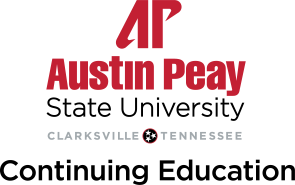- Description
- Objectives
- Outline
- Materials
- Certification
- System Requirements
- Watch a Demo
The widely respected IT certification programs available through Cisco Certifications bring valuable, measurable rewards to network professionals, their managers, and the organizations that employ them.
Cisco Certified Network Associate (200-301 CCNA) Part 1
By the end of this course, you will be able to:
- List the steps for small network implementation and security
- Recall how to implement LANs, VLANs, and STP
- Identify and be able to configure IPv4 routing protocols
- Recognize the concepts behind IPv6
- Identify troubleshooting basics
Cisco Certified Network Associate (200-301 CCNA) Part 2
By the end of this course, you will be able to:
- List concepts of IPv4 access control lists
- Recall topics associated with security threats, vulnerabilities, and exploits
- Identify aspects of IP services
- Recognize the fundamentals of LAN, WAN, and cloud architecture
- Describe details for network automation
Cisco Certified Network Associate (200-301 CCNA) Part 1
**Outlines are subject to change, as courses and materials are updated.**
Cisco Certified Network Associate (200-301 CCNA) Part 2
**Outlines are subject to change, as courses and materials are updated.**
All course materials included.
Cisco Certified Network Associate (200-301 CCNA) Part 1
Upon successful completion of CCNA Part 1 and CCNA Part 2 courses, students will be prepared to sit for the Cisco Certified Network Associate Exam 200 – 301 CCNA certification exam.
Cisco Certified Network Associate (200-301 CCNA) Part 2
Upon successful completion of this course and Cisco Certified Network Associate (200-301 CCNA) Part 2, you will be prepared to sit for the Cisco Certified Network Associate Exam 200 – 301 CCNA certification exam.
Note: These courses are not affiliated with, nor have they been endorsed by Cisco.
Internet Connection
- Broadband or High-Speed - DSL, Cable, and Wireless Connections
*Dial-Up internet connections will result in a diminished online experience. Classroom pages may load slowly and viewing large audio and video files may not be possible.
Hardware Requirements
- Processor - 2GHz Processor or Higher
- Memory - 1 GB RAM Minimum Recommended
PC Software Requirements
- Operating Systems - Windows 7 or higher
- Microsoft Office 2013 or higher. Also, you could use a general Word Processing application to save and open Microsoft Office formats (.doc, .docx, .xls, .xlsx, .ppt, .pptx)
- Internet Browsers - Google Chrome is highly recommended
- Cookies MUST be enabled
- Pop-ups MUST be allowed (Pop-up Blocker disabled)
- The Kindle Reader App or VitalSource Bookshelf App are needed for many of our courses (No special equipment needed. This can be downloaded for FREE onto your computer.)
- PowerPoint Viewer (if you do not have PowerPoint)
- Adobe PDF Reader
- QuickTime, Windows Media Player &/or Real Player
MAC Software Requirements
- Operating Systems - Mac OS x 10 or higher with Windows
- Mac office programs or a Word Processing application to save and open Microsoft Office formats (.doc, .docx, .xls, .xlsx, .ppt, .pptx)
- Internet Browsers- Google Chrome is highly recommended
- Cookies MUST be enabled
- Pop-ups MUST be allowed (Pop-up Blocker disabled)
- The Kindle Reader App or VitalSource Bookshelf App are needed for many of our courses (No special equipment needed. This can be downloaded for FREE onto your computer.)
- PowerPoint Viewer (if you do not have PowerPoint)
- Adobe PDF Reader
- Apple QuickTime Media Player
